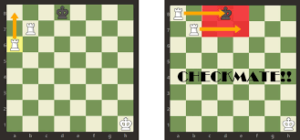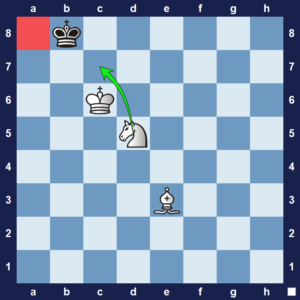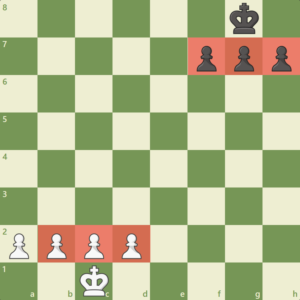Hello, young chess champions! 🌟 Ready to level up your chess skills? Today’s mission is all about spotting checkmate—that special move that wins the game! Let’s dive in and discover how to identify checkmate opportunities like a pro!
What Is Checkmate? 🎯
Checkmate happens when the opposing king is under attack (in “check”) with no legal moves left to escape. This ends the game immediately and declares you the winner! Learning how to recognise checkmates will help you capitalise on opportunities to finish the game in your favour.
The Magic of Checkmate: The King’s Trap 🏰👑
Think of the chessboard as a kingdom, with the enemy king as the target. To deliver checkmate, your pieces need to work together to cover all potential escape routes for the king, while one piece delivers the final “check.” Once the king is fully trapped, check mate is achieved!
Here are a few common check mate patterns that every chess player should know. These patterns can help you spot winning moves more quickly:
The Queen and Rook Checkmate 🥇
Your queen and Rook are two of the most powerful pieces! If you can get them close to the opponent’s king, they can work together to trap him, especially on the back rank (the opponent’s last row of squares).

Source – markalowery
The Ladder Checkmate
Also called the “staircase” check mate, this pattern involves using two rooks (or sometimes a rook and a queen) to force the king toward the edge of the board. The rooks “climb” up the board in a ladder formation, restricting the king’s movement until he’s trapped on the edge.

chess-lessons-for-beginners source by steemit.com
The Knight and Bishop Checkmate 🐴⛪
Knights and bishops cover different squares, making them a powerful team for trapping the king. While not as common as the other patterns, this combo is often used to restrict the king’s escape routes effectively in more complex situations.

Source : Bishop and Knight Checkmate – CHESSFOX
The Back Rank Checkmate 🏁
In this pattern, the opponent’s king is trapped on the back rank by his own pawns or pieces. By placing a rook or queen on the same rank, you can check mate the king since he can’t escape backward.

Source : Back Rank Mate – Chess.com
How to Find Checkmate Moves
Here are some essential tips to help you find check mates in your games:
- Look for Weak Squares Around the King 🔍
Check for squares around the enemy king that aren’t defended by other pieces. These are potential spots to place your pieces to restrict the king’s movement.
- Use Multiple Pieces to Attack 👫
Many checkmates require at least two pieces working together. Your queen, rooks, knights, and bishops are often most effective when they combine their strengths to limit the king’s escape options.
- Study and Practice the Patterns 💡
The more you familiarise yourself with these common check mate patterns, the easier it becomes to recognise them during a game. Regular practice will help you spot check mate opportunities faster and more accurately!
Quick Quiz: Can You Spot Checkmate? 🧠
Test your checkmate knowledge with these quick questions:
- Which of these pairs is great for a checkmate attack?
- Queen and Pawn
- Rook and Knight
- Bishop and Queen
- What is the Ladder Checkmate?
- Using two rooks to trap the king
- Using knights to make the king jump
- Checkmating with just a pawn
- Why is it important to look for squares near the king?
- They are where your pieces can safely
- It makes the king more
- It’s where you can trap the
Answers:
- c) Bishop and Queen
- a) Using two rooks to trap the king
- c) It’s where you can trap the king
Now You’re a Checkmate Spotter! 🎉
With these tips and strategies, you’re ready to start spotting checkmate opportunities in your games. Keep practicing, and soon you’ll be delivering checks like a chess master! 🏆
Parents, if your child is excited about learning more, consider Premier Chess Academy for fun and engaging chess lessons. Our programs are designed to help young learners grow their skills and confidence! 🌟♟ Take a Free Trial session Today !


Recent Comments